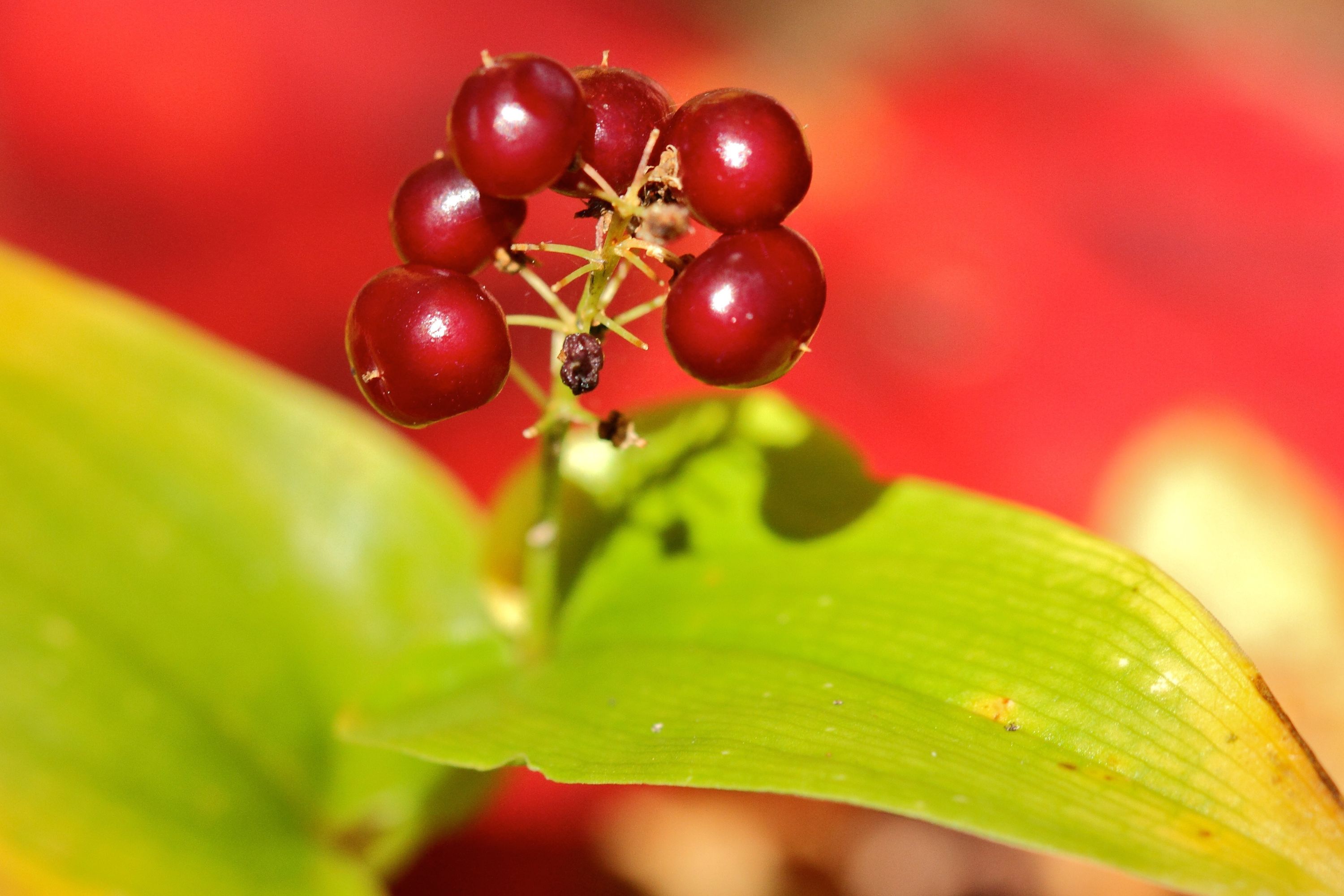Canada mayflower
(Maianthemum canadense)

Description
Maianthemum canadense (Canadian may-lily, Canada mayflower, false lily-of-the-valley, Canadian lily-of-the-valley, wild lily-of-the-valley, two-leaved Solomon's seal) is an understory perennial flowering plant, native to Canada and the north-eastern United States, from Yukon and British Columbia east to Newfoundland, into St. Pierre and Miquelon. It can be found growing in both coniferous and deciduous forests. The plant appears in two forms, either as a single leaf rising from the ground with no fruiting structures or as a flowering/fruiting stem with 2-3 leaves. Flowering shoots have clusters of 12–25 starry-shaped, white flowers held above the leaves. Plants grow to 10–25 cm (4–10 in) tall, arising from branching rhizomes that have roots only at the nodes. Plants may be one-leaved and without fruiting structures (sterile). Fertile, flowering shoots have 2–3 leaves.Found in Canada from SE Yukon, southern Northwest Territories, into eastern B.C. and east to Newfoundland and Labrador, and into St. Pierre and Miquelon. Also found in northern United States from the Dakotas east, south along the Appalachian Mountains and outliers in Colorado, Wyoming Nebraska and Kansas. Primarily a boreal forest understory species, but also found at low elevation sites in the Rocky Mountains, to 1800 m. It is associated with moist woods but is also found in sandy pine woods in the north and can persist in clearings.
Taxonomic tree:







